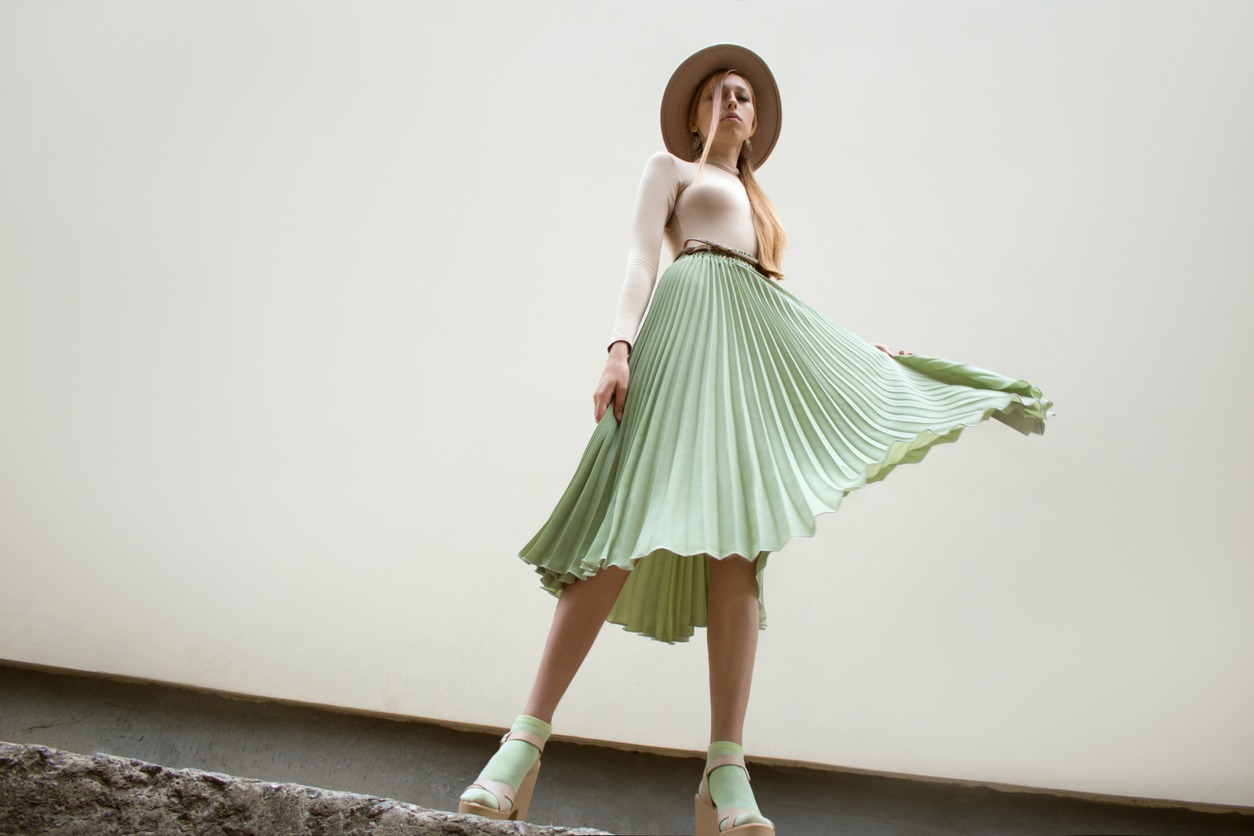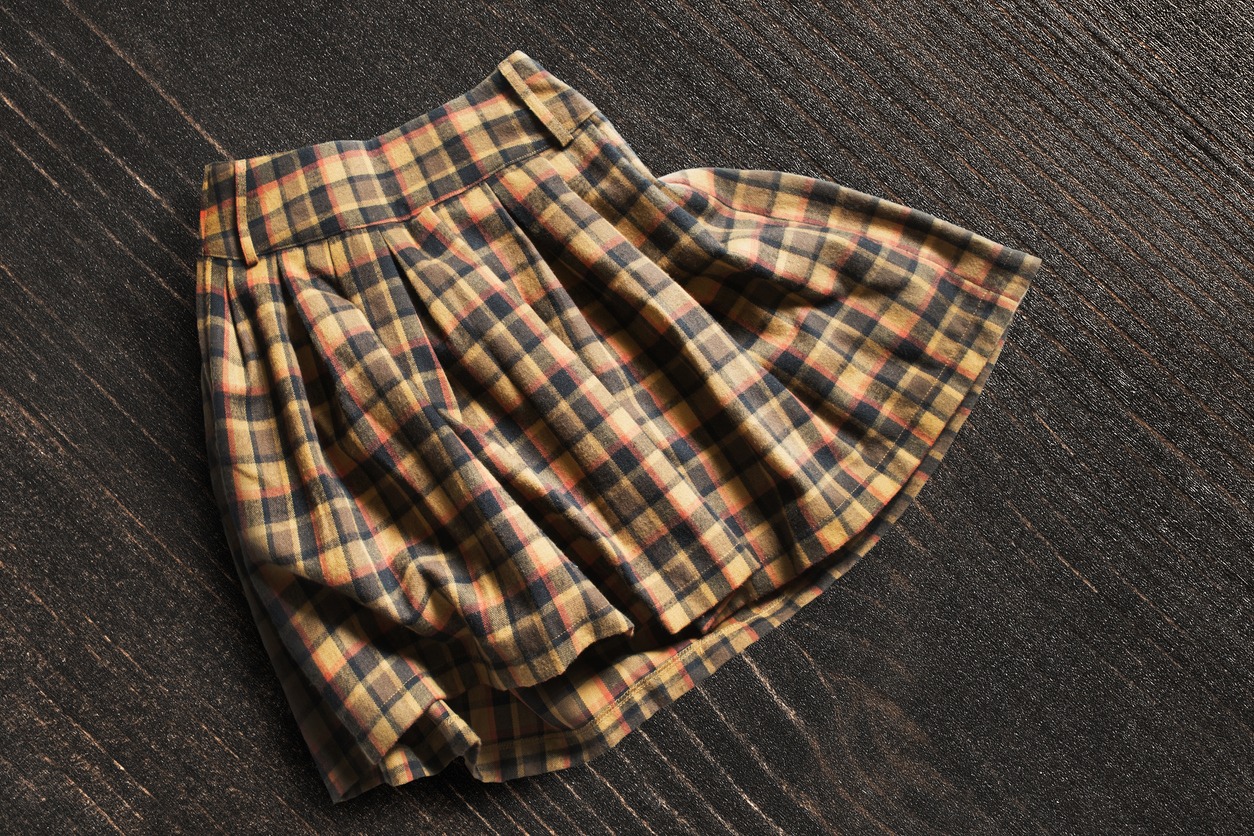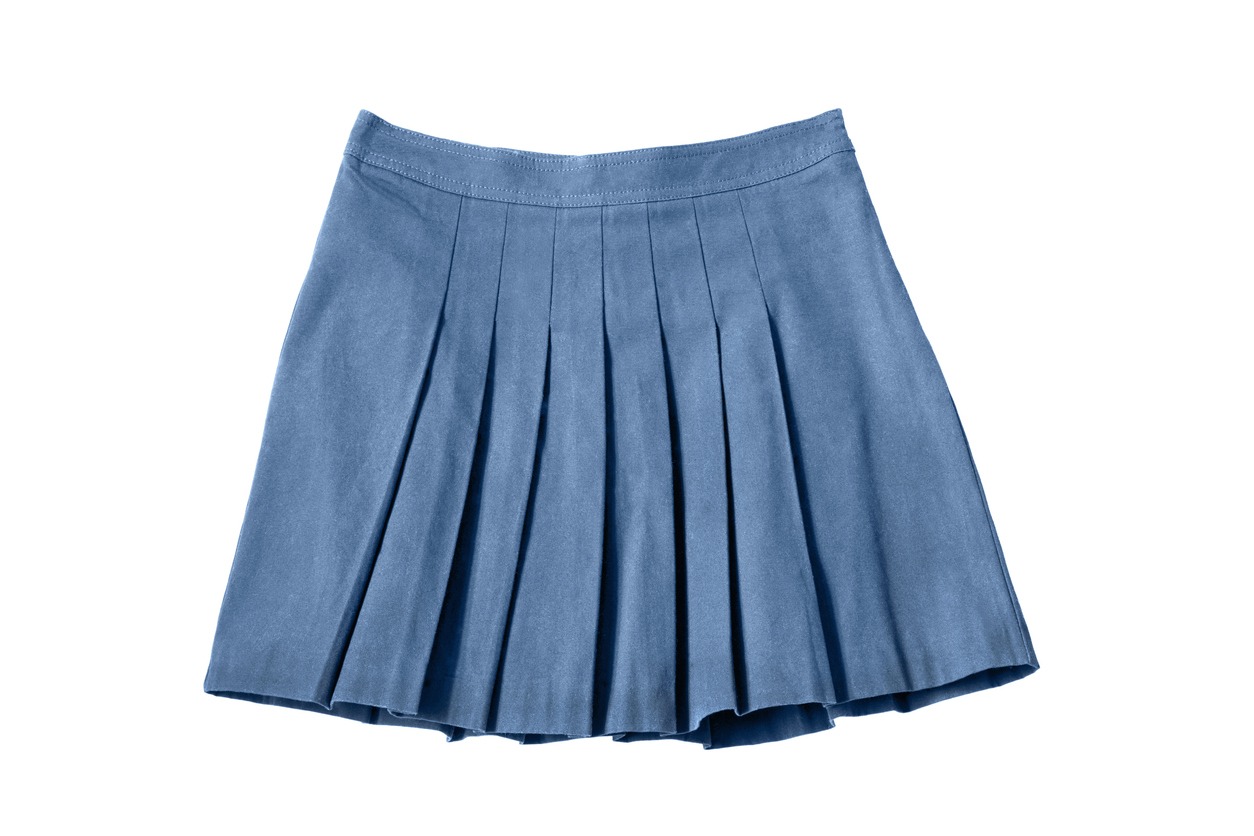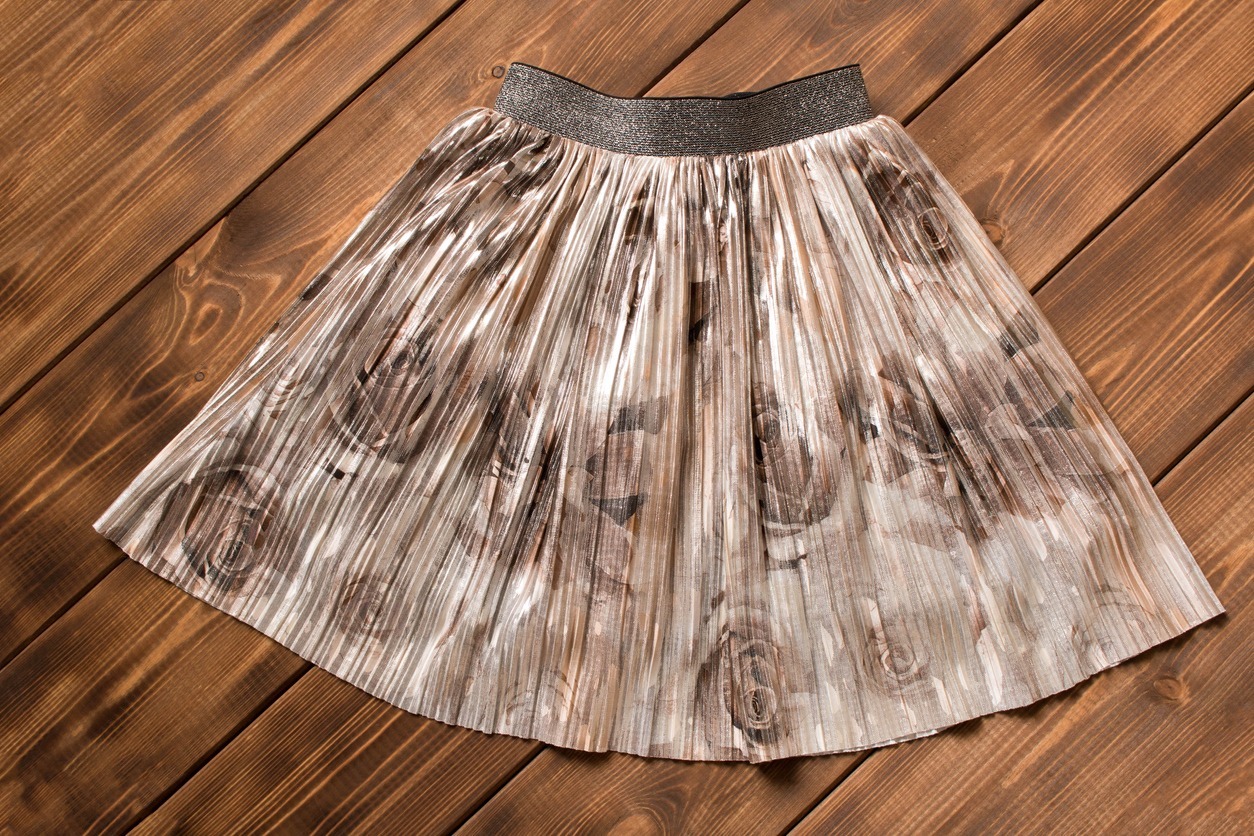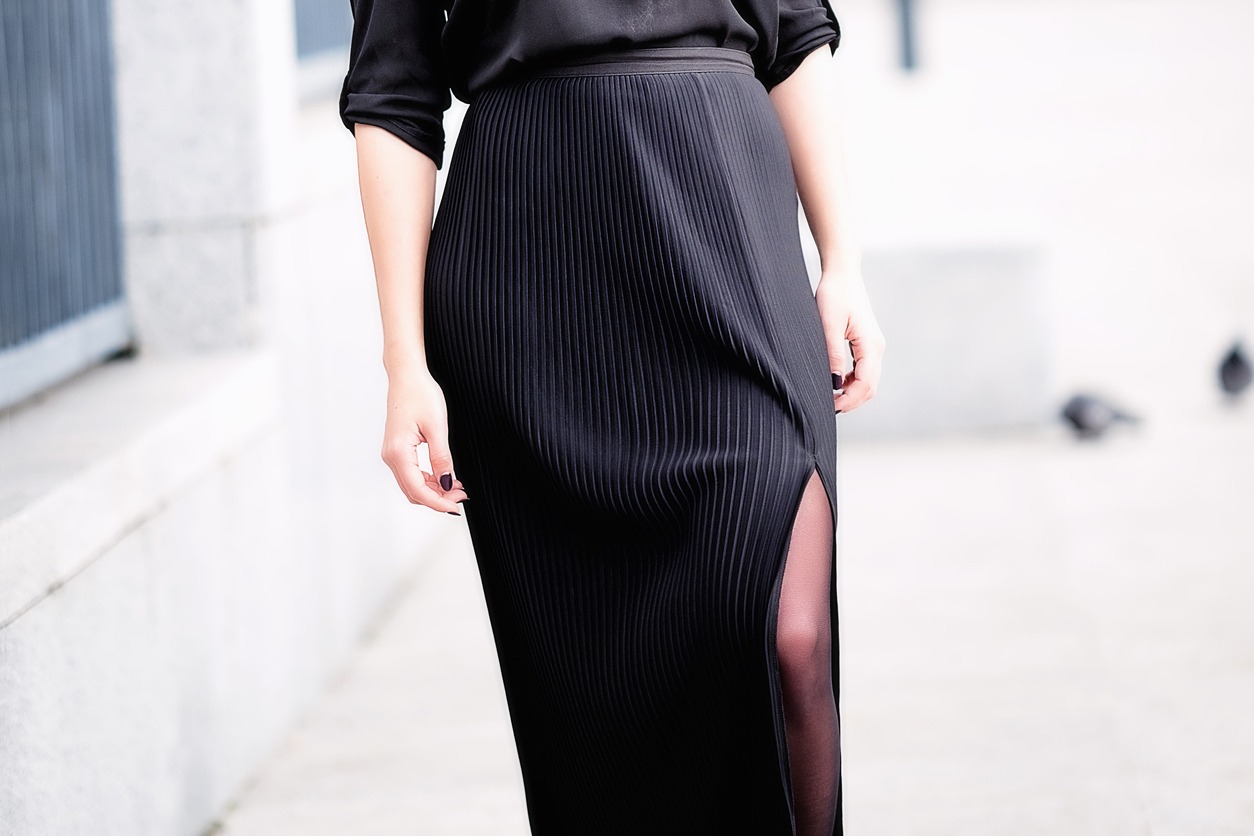A pleated skirt is a piece of clothing that features vertical creases in the fabric called pleats. They are permanent folds in cloth made by doubling the material over and ironing or sewing the fold into place to make a long-lasting crease. These pleats add body to the shape of the skirt. There are also many types of pleated skirts that you can find today in many fabrics and cuts.
Pleated skirt outfits make the best blend of both sophistication and street style. That is why a lot of fashion enthusiasts love this type of skirt. Therefore, if you are one of the people who are up for rocking some pleated skirts and making a statement, you’re in the right place. In this article, we are going to give you more information about pleated skirts, including their different types and how to style them, whether you are going for a casual, professional, or elegant outfit.
History of Pleating
Before we talk about pleated skirts, let us first learn more about pleating and its origins. Pleating or plisse is an antique technique to alter the shape of the fabric, as to create symmetrical stripes. It is a method of manipulating fabric by folding the material to make it fuller.
At the present time, pleats can be found everywhere, such as in skirts, blouses, dresses, and even in curtains. But the ancient technique was born in ancient Egypt, where it was used to decorate the tunics of the rulers as a symbol of power and wealth. Back then, the pleating of natural fibers was not simple and cheap, which made them a luxury.
The process of pleating in ancient times took a lot of time as it was made by hand. Once the garment was washed, the pleats vanished and the process had to be done all over again, which is quite exhausting. There are many historical examples that show the use of pleats in the garments of royalty. For instance, Queen Elizabeth used to wear a pleated collar referred to as a ruff, which became symbolic of her era. It was a circular collar made from a pleated frill worn by both men and women.
At the start of the 20th century, Mariano Fortuny, a multi-tasked Spanish artist, created a dress called Delphos, which was made with pleated fine silk. His popular invention was called the Fortuny pleats, and it was a clear recreation of the Ancient Greek column. His design showed the natural curves of the female body due to its natural elasticity. However, the problem of fixing the pleats permanently so the dress could be washed was not solved.
Eventually, the time-consuming manual production was replaced by the use of pleating machines. This made pleats more available to a larger group of the population. Today, most pleated fabrics for ready-to-wear fashion are produced by pleating machines, and only couture garments are pleated by hand, making them much more expensive.
The Different Types of Pleated Skirts
There are several types of pleated skirts available in the market today, and each of them has its own unique style and characteristics. Below are some of the most popular types of pleated skirts that you need to learn about:
Box Pleated Skirt
Box pleats are crisp and angular, and they can create a structured and tailored look. The pleats in this type of skirt are evenly spaced and face in opposite directions, creating a box-like effect. Most box pleated skirts feature a defined waistband and are available in different lengths, from mini to maxi.
Knife Pleated Skirt
Knife pleats are narrow and sharply pressed. They run vertically from the waistband of the skirt. The pleats are often uniform in size and provide a clean and streamlined appearance. Knife pleated skirts are also available in different lengths, and they are also usually made from lightweight fabrics like chiffon or silk, giving them a flowy effect.
Accordion Pleated Skirt
Accordion pleats are narrow and vertical, which resemble the folds of an accordion. They enable the skirt to expand and contract, creating a beautiful drape and movement. Most accordion-pleated skirts are made from lightweight materials and can range from midi to maxi length.
Sunburst Pleated Skirt
Sunburst pleats radiate from the waistband, fanning out like the rays of the sun. They create a voluminous and dramatic effect, providing the skirt with a full and flared appearance. Most sunburst pleated skirts are made from lightweight fabrics and are also available in different lengths.
Inverted Pleated Skirt
Inverted pleats are also referred to as reverse pleats, as they face inward towards the center of the skirt. They can provide added volume while maintaining a clean and polished look. Inverted pleated skirts are usually seen in A-line or flared silhouettes. They are also available in different skirt lengths.
Plisse Pleated Skirt
Plisse pleats are small, textured pleats that feature a crinkled or wrinkled appearance. These pleats are usually created through a special fabric treatment process. These skirts have a relaxed and effortless look, and they are available in different lengths and fabrics.
Paneled Pleated Skirt
Paneled pleated skirts combine pleats with various fabric panels. This means that the pleats can be present on specific parts of the skirt, such as the sides or the hem, while the remaining areas are left plain or feature a contrasting fabric. These skirts offer a unique and creative design element.
These are just a few examples of pleated skirts, and there can be variations and combinations of different pleat types. Each type of pleated skirt adds its own flair and style, allowing you to choose the one that best suits your preferences and the occasion.
Tips on How to Style Pleated Skirts
Pleated skirts are timeless and versatile garments that can be styled in different ways to create various fashion looks. Whether you are aiming for a casual, elegant, or professional look, pleated skirts are a fantastic addition to your wardrobe. To further help you, below are some of the best tips to help you make the most of your pleated skirts:
Choose the Right Length
There are different lengths available for pleated skirts, which range from mini to midi and maxi. When choosing the length of the skirt you have to consider your body shape and your personal style. For a youthful and playful look, you can opt for mini pleated skirts. But for a more elegant and sophisticated vibe, choose midi and maxi pleated skirts.
Play with Colors and Prints
Pleated skirts come in different colors and prints. For a timeless and versatile option, you can choose pleated skirts with solid neutral shades, such as beige, white, or black. However, if you are aiming to make a statement, you can experiment with pleated skirts that have vibrant hues and eye-catching prints, such as stripes, florals, or polka dots.
Balance the Proportions
Pleated skirts have volume and texture. Therefore, it is essential to balance the proportions in your outfit. For instance, if you are wearing a voluminous pleated skirt, it is best to pair it with a fitted top or a tucked-in blouse to create a well-proportioned silhouette. If you are aiming for a more relaxed look, you can wear a loose-fitting top that matches the volume of the pleated skirt.
Pick the Right Fabric
Most pleated skirts are made from materials like silk, chiffon, cotton, or polyester. The fabric choice will affect the overall look and feel of the skirt. If you want to achieve a flowy and ethereal look, choose pleated skirts with lighter fabrics, such as silk or chiffon. But for a more structured appearance, you can pick pleated skirts with sturdier fabrics like cotton.
Pay Attention to Proportions
When it comes to wearing pleated skirts, the right proportions are key. If you are petite, it is better to choose a shorter length to avoid overwhelming your frame. But if you are taller, you can pull off longer lengths and experiment with bold prints. Adjusting the waistline can also create different effects. For example, a high-waisted pleated skirt can help elongate your legs, while a mid-rise or low-rise skirt can offer a more relaxed look.
Accessorize Wisely
Another way to enhance your pleated skirt outfit is by accessorizing. You can try adding a belt to cinch the waist and define your silhouette. Aside from that, you can also pair your pleated skirt with heels or ankle boots to elongate your legs. You can choose to wear flats if you are aiming for a more comfortable and casual look.
Experiment with Styling
It is quite easy to style pleated skirts, and you should not be afraid to experiment with different styling options. For example, you can wear a pleated skirt with a tucked-in blouse, a cropped sweater, a button-down shirt, or even a graphic tee for a more casual look. You can try various combinations to see what works best for you and what matches your personal style and the occasion. Remember, fashion is about expressing your personal style, so feel free to experiment and have fun with your pleated skirts.
Conclusion
Pleated skirts are indeed a great wardrobe addition. They can look amazing with different tops, accessories, and shoes. They are also the perfect material when it comes to styling any kind of look. These make them versatile and timeless fashion staples that can elevate your style in many ways.
Whether you prefer the structured and tailored look of box pleats or the flowy elegance of accordion pleats, there’s a pleated skirt type you can wear for every occasion and personal style. So go ahead, explore the various types of pleated skirts, embrace your style, and enjoy the fashion possibilities that pleats bring to your outfits. We hope this article helped you learn more about styling pleated skirts.

